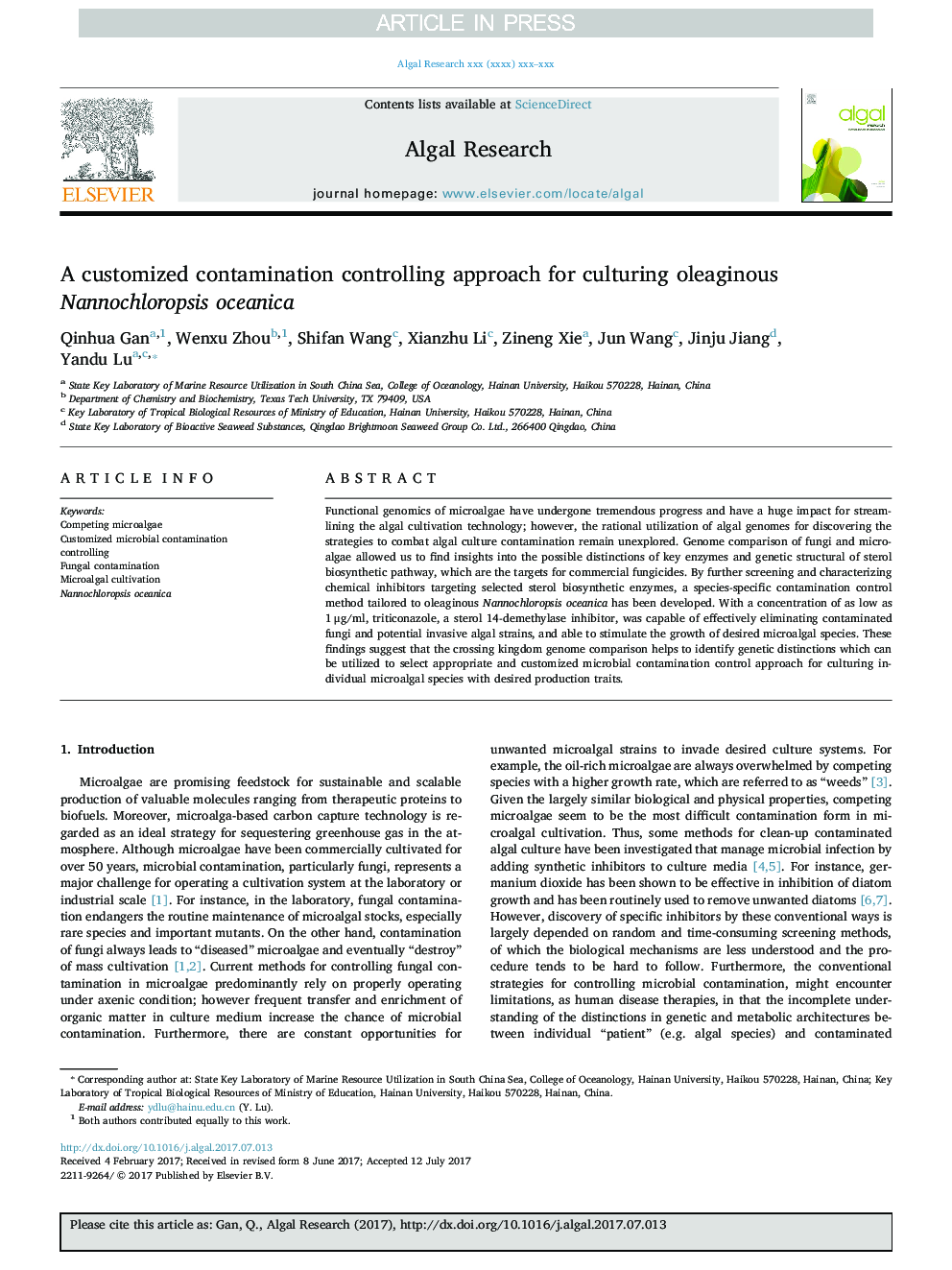| Article ID | Journal | Published Year | Pages | File Type |
|---|---|---|---|---|
| 5478565 | Algal Research | 2017 | 7 Pages |
Abstract
Functional genomics of microalgae have undergone tremendous progress and have a huge impact for streamlining the algal cultivation technology; however, the rational utilization of algal genomes for discovering the strategies to combat algal culture contamination remain unexplored. Genome comparison of fungi and microalgae allowed us to find insights into the possible distinctions of key enzymes and genetic structural of sterol biosynthetic pathway, which are the targets for commercial fungicides. By further screening and characterizing chemical inhibitors targeting selected sterol biosynthetic enzymes, a species-specific contamination control method tailored to oleaginous Nannochloropsis oceanica has been developed. With a concentration of as low as 1 μg/ml, triticonazole, a sterol 14-demethylase inhibitor, was capable of effectively eliminating contaminated fungi and potential invasive algal strains, and able to stimulate the growth of desired microalgal species. These findings suggest that the crossing kingdom genome comparison helps to identify genetic distinctions which can be utilized to select appropriate and customized microbial contamination control approach for culturing individual microalgal species with desired production traits.
Related Topics
Physical Sciences and Engineering
Energy
Renewable Energy, Sustainability and the Environment
Authors
Qinhua Gan, Wenxu Zhou, Shifan Wang, Xianzhu Li, Zineng Xie, Jun Wang, Jinju Jiang, Yandu Lu,
